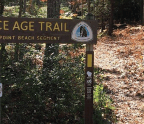
President Franklin D. Roosevelt famously declared Japan’s December 7, 1941, bombing of Pearl Harbor, Hawaii, “a date that will live in infamy.” For those of Japanese ancestry in America, the date even more deeply seared into memory is February 19, 1942. That day, Roosevelt ordered the mass removal from the West Coast of “all persons deemed a threat to national security.” In practice, Order 9066 applied exclusively to American Japanese, 120,000 of them. Of those ordered from their homes, 70 percent were American citizens.
Wholesale evacuation took months to gestate but arrests began immediately after Pearl Harbor. Using newly compiled lists of “suspect enemy aliens,” the FBI detained 1,000 German and Italian immigrants and 1,200 prominent Japanese Americans. The latter were nearly all male, most living on the West Coast or in the U.S. territory of Hawaii.
UC Berkeley student Yoshiko Uchida returned from the campus library that December 7 to find an FBI agent searching her parents’ Berkeley home, demanding to know the whereabouts of Yoshiko’s father, an executive with a Japanese-owned export firm. Dwight Uchida was soon arrested and confined with other suspects at the Presidio army base before being sent to a federal prison in Missoula, Montana.
After ransacking Japanese farmers’ homes in Oregon’s Hood River Valley, FBI agents arrested community leaders, including Tomeshichi Akiyama, president of a local cultural group, the Japanese Society. Akiyama’s son George was among 3,000 Nisei, or second-generation Japanese Americans, then serving in the U.S. military. Some Nisei in uniform were peremptorily discharged; in addition, the Selective Service stopped accepting Japanese Americans who were trying to enlist. Once the services realized the utility of having Japanese speakers in the ranks and the need for trained combat personnel, officialdom shipped most Nisei servicemen inland to Minnesota and Wisconsin for intelligence training and readiness drills.


Japanese Americans pushed back. The president of the vigorously patriotic Japanese American Citizens League, Saburo Kido, telegraphed FDR: “We are ready and prepared to extend every effort to repel this invasion together with our fellow Americans.”
, the largest stateside Japanese-language newspaper, editorialized in English that Japan






